Gas Station Debit Card Hold: 7 Shocking Facts For Drivers
Debit card hold at a gas station is something most drivers tend to forget—until they see a surprise charge on their bank statement. When you use your debit card at a gas station, particularly at the pump, you may have a temporary hold that holds more money than you actually plan to spend. That hold can be between $50 and $150, based on the policy of the gas station and your bank’s rules for authorizing charges.
For people on tight budgets or those relying on timely direct deposits, these gas station debit card holds can be more than just a nuisance. They can cause declined transactions, overdraft fees, and financial anxiety. In this article, we’ll explore exactly how these holds work, why they exist, how long they last, and most importantly—how to avoid them. These observations are drawn from actual banking operations and scenarios from prominent institutions such as Visa, MasterCard, and major gas station chains.
Table of Contents
7 Shocking Facts Drivers Must Know
1. Learning About What a Gas Station Debit Card Hold is
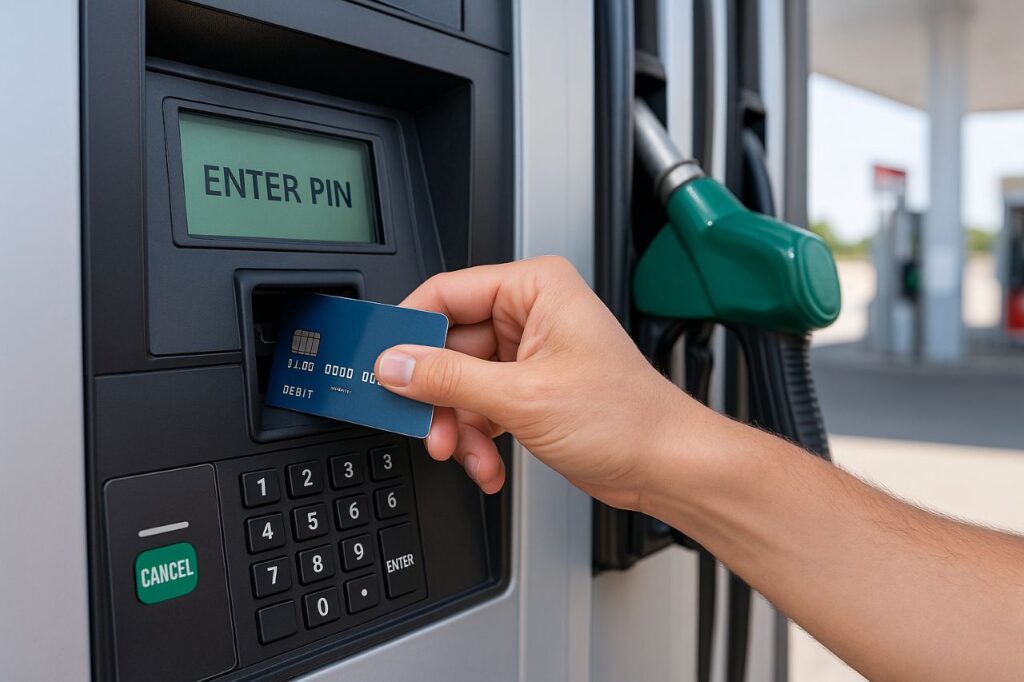
What is a Debit Card Hold?
A gas station debit card hold is a pre-authorization put on your account temporarily by the gas station when you swipe a debit card at the pump. Even before you begin pumping gas, the station’s payment system sends a message to your bank or credit union to confirm whether you have enough funds in your account. This holds an amount of your balance that is fixed.
It’s important to note that this is not an actual charge—you’re not being billed twice. Instead, it’s a temporary freeze on part of your available balance until the final transaction posts. This practice is common at pay-at-the-pump terminals, which are considered “card-not-present” transactions and thus carry higher risk.
Most gas station debit card holds are $50 to $150, but higher holds of $175 or more can be authorized at some stations, particularly in high-cost locations or when fuel prices fluctuate.
The held amount remains locked until the gas station settles on the exact transaction amount and your bank posts the change to your balance.
This procedure may take a few minutes to several business days, depending on your bank and the batch processing of the gas station.
Newer terminals, as MasterCard says, can now conduct real-time pre-authorizations, and this may lower the amount reserved or even cancel it if the transaction is completed in a timely manner.
- Fast Fact: You can’t pump more than $25 of fuel, but if the hold on the gas station debit card is $100, that extra $75 might remain unavailable for hours or even days.
Why It Happens
Gas stations generally have no idea how much gas the customer plans on buying. Because fuel is dispensed before the transaction amount is known, they must use a pre-authorization hold to reduce the risk of non-payment. In this manner, the station knows it has sufficient funds in the customer’s account to pay for the highest possible purchase.
This is particularly important in pay-at-the-pump transactions, in which there’s no attendant cashier to check purchase limits. Pre-authorizing a high amount ensures that the gas station safeguards itself against situations in which a consumer pumps fuel but lacks sufficient money in the account to cover the cost.
Visa illustrates the process step by step that describes how holds on debit cards at gas stations function and the reason for the pre-authorization of real-time fuel transactions.
Real-World Example: Let’s say you pump just $20 worth of gas, but the station puts a $125 gas station debit card hold against your account. That entire $125 may be tied up for as long as 72 hours—even though the ultimate transaction was only $20. This can be particularly infuriating if you’re counting on those funds for rent, groceries, or bills.
Final Thoughts
Knowing the mechanics of a gas station debit card hold can save you confusion and better help you manage your money. Though it is an industry standard, the effect on your available balance can be substantial—if you don’t know it’s occurring. By being aware and understanding how these holds function, you’ll be more ready to take preventive measures, something that we’ll discuss further in our subsequent sections.
2. How Long Does the Hold Remain?
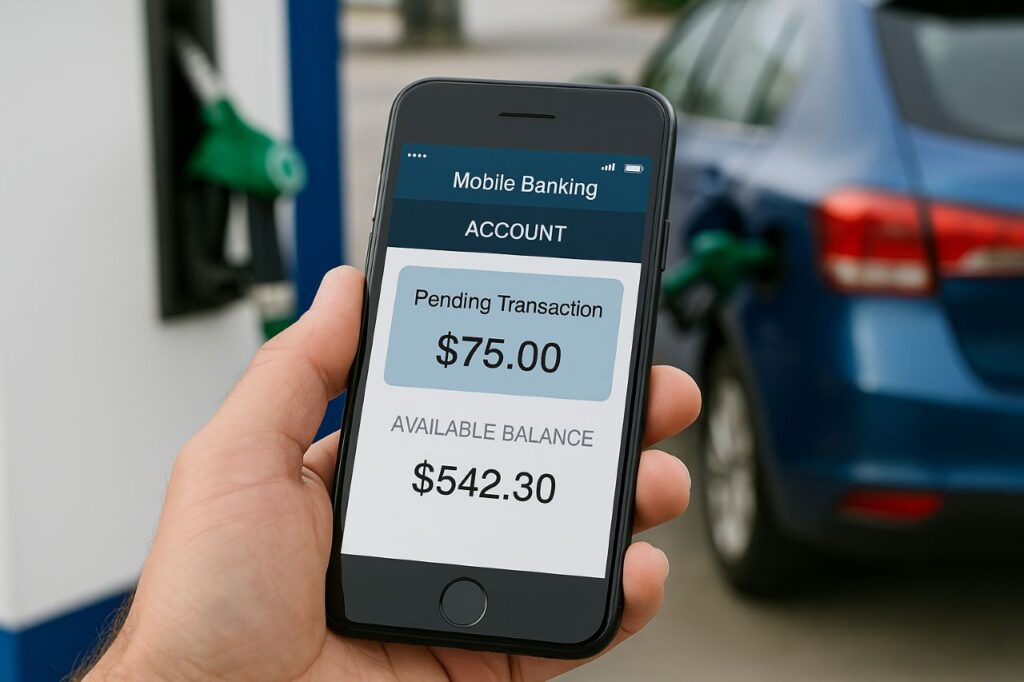
Bank and Station Policies Differ
With a gas station debit card hold, one of the most aggravating aspects is how long the hold remains on your account. Unlike a standard purchase, in which the charge shows up practically immediately, these holds can remain on your account for hours or even days. The length of the hold depends on several key factors:
- Your bank’s pending authorization policy.
- The gas station’s payment processing system.
- Whether or not the pump terminal supports real-time authorization.
Most gas station debit card holds last between 2 to 72 hours, though some can extend up to five business days, especially over weekends or holidays. If you’re using a smaller bank or credit union, the delay may be longer due to limited batch processing times.
- Helpful Tip: If you’re unsure how long your funds will be held, call your bank directly and ask how they handle fuel pre-authorizations.
According to Wells Fargo, the actual purchase amount usually replaces the hold after the merchant submits the final transaction, but this process may not be immediate. Until then, the held amount will remain inaccessible.
Debit vs. Credit Card Holds
Most consumers think debit and credit cards act similarly at the pump, but under holds, they act quite differently.
- Debit Cards: When you pay with your debit card, the gas station debit card hold actually impacts your available checking account balance. That means the money is taken temporarily out of bounds—although you haven’t actually spent it yet.
- Credit Cards: When you pay with a credit card, however, the pre-authorization hold just lowers your available credit, not your actual money. This gives you more leeway and does not upset your budget.
Having a debit card can cause problems for people who have automatic payments set up, like rent, phone bills, or loan payments. If your balance is short because of a gas station debit card hold, it may cause overdraft charges or rejected payments.
- Example: Suppose you have $120 in your checking account. You use your card at the fuel pump, and a hold of $100 is put on. You pay only $25 for gas, yet your bank balance now reflects only $20 available. If your $100 utility bill clears prior to the hold being released, it could bounce.
Faster Holds with New Technology
The good news? Most large gas station chains and banks are transitioning to real-time authorization, which reduces the duration of a gas station debit card hold. Newly issued terminals can set the hold to the exact purchase amount as soon as fueling is complete, according to Visa’s guide to fuel transactions.
Major chains such as Shell, ExxonMobil, and Chevron are replacing their pumps to accommodate this quicker processing. Some banks, including Chase and Bank of America, are also upgrading their systems to release funds sooner.
Older pumps can still batch-accept transactions at the end of the day.
More modern pumps with chip or contactless payments tend to sync transactions right away.
- Pro Tip: Check stickers or screens at the pump that read “EMV enabled” or “Real-time authorization supported”—this will likely mean that your hold clears more quickly.
Summary
The duration of a gas station debit card hold varies with a number of moving variables. Although you may not have control over when the funds are released, being aware of the distinctions between debit and credit card holds, and opting for newer fuel stations, will help you avoid financial inconvenience and uncertainty. Later on in this section, we will explain the dangers associated with paying at the pump using a debit card—particularly when it relates to fraud and money delays.
3. Risks of Using a Debit Card at the Pump
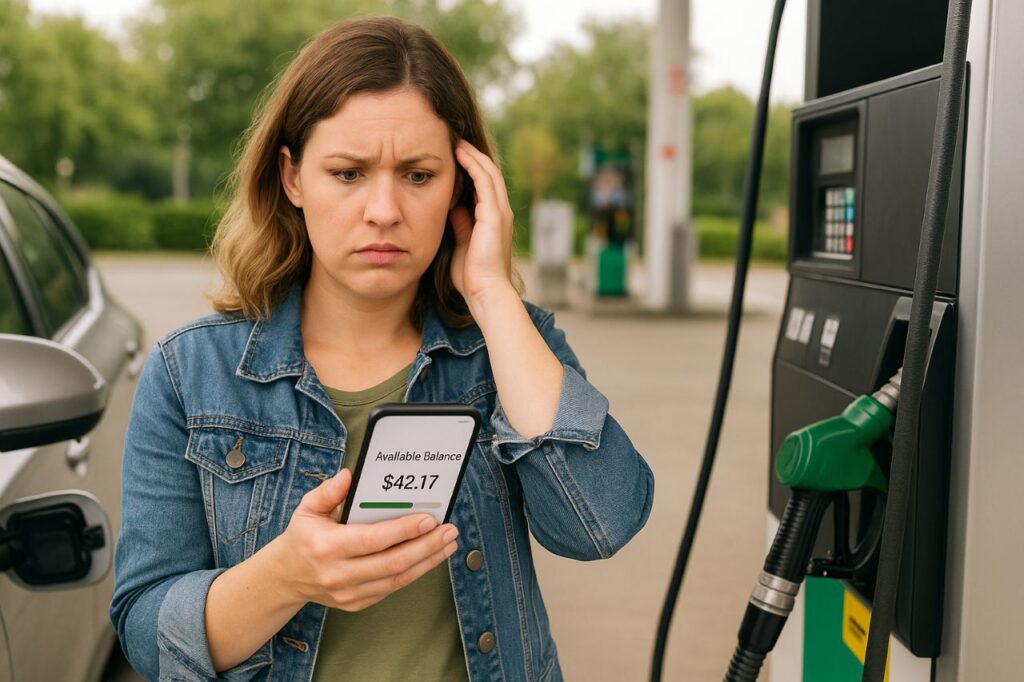
Using a debit card may seem like the easiest option at a fuel station, but it comes with serious drawbacks—especially because of the gas station debit card hold that can freeze a portion of your available funds. These risks are often underestimated until they directly impact your day-to-day banking or personal budget.
Let’s break down the primary concerns every driver should understand.
Financial Inconvenience and Overdraft Risks
One of the most common issues caused by a gas station debit card hold is the inconvenience it creates for your account balance. Since these holds can lock up a large amount of money, your real-time available funds may be much lower than expected.
Common Consequences:
- Tied-up funds: If you’re operating on a tight budget, this can disrupt other planned purchases.
- Overdrafts: Scheduled payments like rent or utility bills may bounce, leading to overdraft fees.
- Declined cards: You might find your debit card gets declined elsewhere—even though you technically have enough money in your account.
- Real Example: A customer had $200 in their account and bought $30 worth of gas. The pump applied a $100 gas station debit card hold, leaving only $100 available. Their automatic student loan payment of $150 was rejected, resulting in a $35 overdraft penalty.
According to Consumer Financial Protection Bureau (CFPB), banks are not required to notify you of debit holds, which can make managing money more difficult without proactive account monitoring.
Increased Fraud Risk
Another major downside of using a debit card is vulnerability to fraud and skimming at unattended fuel pumps. A gas station debit card hold may just be the start of your worries if your card data is stolen.
How It Happens:
- Skimming devices are often attached to older fuel pumps.
- These devices capture card info and PINs when you insert your card.
- Hackers can then make unauthorized withdrawals or clone your debit card.
Unlike credit cards, which often come with stronger fraud protection policies, debit cards expose your entire checking account to risk. The Federal Trade Commission (FTC) explains that while your liability may be limited to $50 if reported within two days, delays in detection can increase that liability to $500 or more.
- Important: With a gas station debit card hold, your money is already inaccessible. If a skimming event occurs at the same time, you could face dual financial restrictions while your bank investigates.
Lack of Real-Time Updates
Debit card users often experience confusion over their actual balance due to the delay in releasing a gas station debit card hold. The pending status of the transaction can make your account look more or less funded than it really is.
Example Scenario:
- Your bank app shows $200 available.
- You fuel up $40 but a $125 gas station debit card hold is applied.
- Until the hold is lifted, you only truly have $75 accessible—even if the app doesn’t reflect that.
This makes it extremely difficult to budget accurately or make critical payments immediately after fueling.
Summary of Debit Card Risks
Here’s a quick summary of the main risks associated with a gas station debit card hold when using your debit card:
- Frozen funds you can’t access immediately
- Higher chances of overdraft fees
- Increased fraud vulnerability
- Confusing account balances
In the next section, we’ll focus on how you can avoid a gas station debit card hold altogether by taking a few smart steps every time you refuel.
4. How to Steer Clear of a Gas Station Debit Card Hold
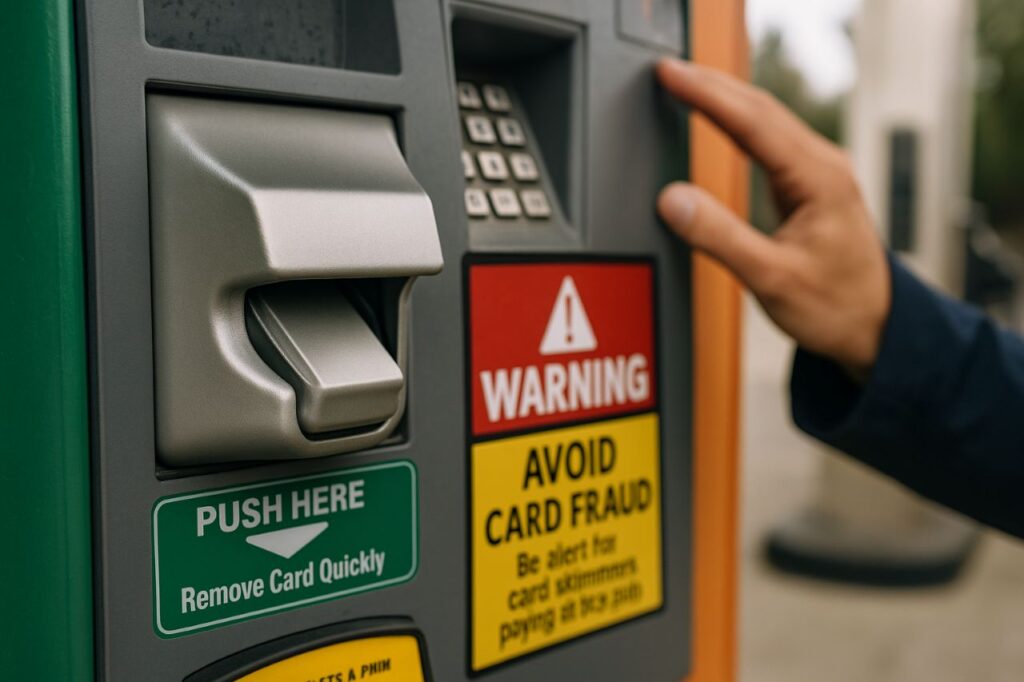
The optimal way to handle a gas station debit card hold is to avoid it in the first place. While these holds are industry practice, there are several ways you can avoid them with more intelligent payment strategies and improved financial planning.
If you’re sick of delayed availability of funds or annoying account freezes after fueling up, these are the best ways to not get held up.
- Pay Inside the Gas Station:
- One of the easiest and best ways to not get caught with a gas station debit card hold is to go inside and pay the attendant in person.
- Why This Works:
- The transaction is done in real-time.
- A debited amount as precise as the purchase amount only is charged against your debit card.
- No pre-authorization charge is needed because the cashier personally inputs the overall amount.
For U.S. News, shop inside to eschew pending charges and the delay in receiving fund releases and make it the most dependable source for debit-card users.
This additional step might be a hassle, but it provides you with complete control over your money and prevents the uncertainty of pre-established pump authorizations.
Use a Credit Card Instead
Paying with a credit card at the pump is another great way to avoid a gas station debit card hold. Credit card holds don’t freeze your checking account balance, which prevents sudden financial interruptions.
Benefits:
- Credit card holds impact credit limits, not real money.
- Limited fraud liability under the Fair Credit Billing Act, typically to $0 if timely reported.
- More likely to get unauthorized charges disputed.
NerdWallet says credit cards offer more robust protection against fraud and do not endanger your bank account, so they are a better choice for paying at gas stations.
Even if you do not use credit consistently, having one card set aside for gas costs can make budgeting easier without increasing risk.
Select Gas Stations Featuring Cutting-Edge Payment Technology
Gas stations equipped with cutting-edge point-of-sale (POS) terminals are going real-time authorization, which not only minimizes gas station debit card holds but erases them as well.
What to Be on the Lookout for:
- Pumps displaying “EMV Chip Enabled” or “Contactless” tags.
- Facilities that utilize Visa or MasterCard real-time capabilities.
- Chains such as Shell, Exxon, and Chevron that use enhanced terminals.
These new systems talk directly to your bank to only authorize the amount you’re actually pumping, reducing the hold amount and the hold time.
According to Visa’s Real-Time Fueling Initiative, enhanced terminals now permit updates of authorization during fueling or as soon as the nozzle is replaced—greatly decreasing delays.
Use Prepaid Fuel Cards or Mobile Apps
Another option is prepaid gas cards or mobile payment apps offered by gas companies. These instruments enable you to preload a fixed amount, which eliminates the need for a significant hold.
- Examples:
- Shell Gift Card – Deducts only preloaded funds.
- ExxonMobil Rewards+ App – Enables in-app payments without the use of pre-authorizations.
- BPme App – Enables mobile fueling with digital receipts and transaction control.
Forbes states prepaid cards provide the consumer with more control and eliminate the potential for overdraft or prolonged debit card holds at gas stations.
The tools also have loyalty programs, which help you save money on future refueling.
- Talk to Your Bank:
- If you’re consistently seeing late debit card hold releases at gas stations, it’s worth talking to your bank about what you can do.
- Ask Your Bank:
- How long do they leave fuel holds in place?
- Can you get notified when a hold is placed or released?
- Do they enable customization of overdraft protection?
Some banks, such as Chase or Ally, provide mobile alerts and expedited reconciliation of debit holds. Others will ask you to opt out of overdraft features if you don’t want to pay additional fees due to surprise pre-authorizations.
Summary of Smart Practices
Here’s a quick summary of the best practices to prevent a gas station debit card hold:
- Pay in-station instead of at the pump.
- Pay with a credit card for improved fraud protection.
- Opt for fuel stations with new payment systems.
- Experiment with prepaid fuel cards or gas station apps.
- Keep up with your bank’s policy and tools.
Taking these precautions can keep you secure in your finances and make sure you’re never left in the lurch by an unexpected frozen bank balance at the most inconvenient time.
5. Industry Trends and Regulations
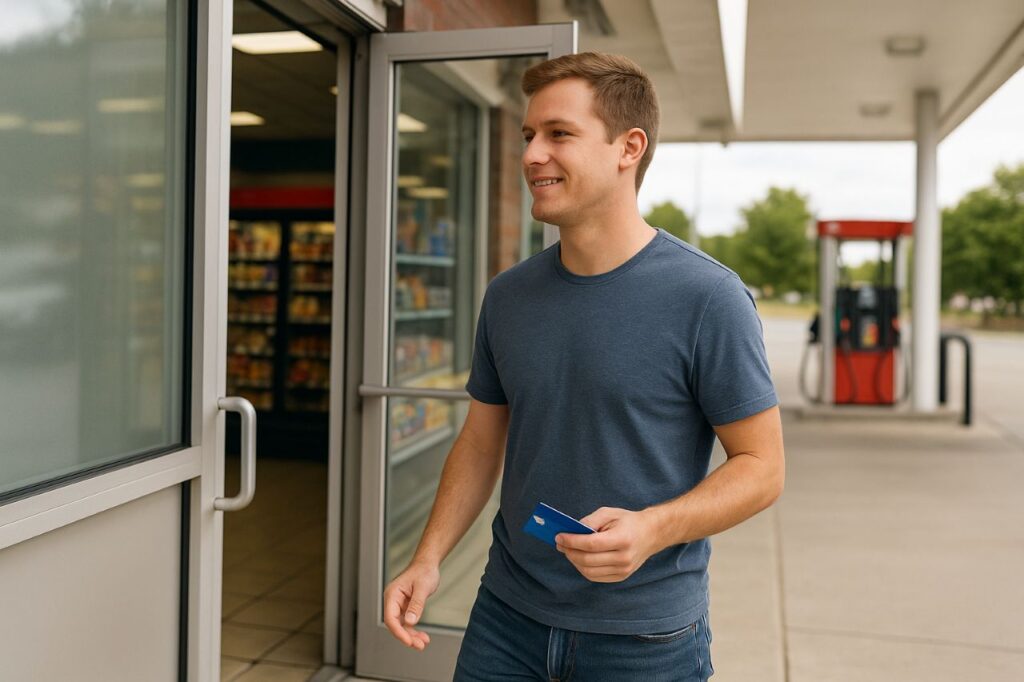
With increasing consumer awareness, banks, credit card companies, and gas stations are compelled to speed up the hold process of the gas station debit card, make it fairer, and more transparent. Regulatory agencies and payment networks are reacting with new technology and better guidelines to minimize the effects of these holds on ordinary consumers.
This section discusses the most recent trends and regulations governing the manner in which gas station debit card holds are placed, for how long they remain, and what action is being done to safeguard consumers.
Visa and MasterCard Fuel Authorization Enhancements
Large payment card networks such as Visa and MasterCard have made enhancements to reduce the length and value of the gas station debit card hold.
- What’s Changing: Real-time authorization: New POS equipment now transmits real-time information between the pump and the customer’s bank.
- Dynamic holds: Rather than a one-size-fits-all $100–$150 hold, the system can authorize the estimated or actual purchase amount.
- Instant updates: The moment fueling is completed, the hold drops to the actual amount and settles more rapidly.
According to Visa, this technology shortens the average fuel hold duration from hours to minutes, providing a more fluid experience and fewer interruptions to customers’ funds.
These innovations are being adopted incrementally by leading fuel retailers, cutting the rate and aggravation of gas station debit card holds.
Bank-Level Adjustments and Consumer Protections
Several banks have also implemented measures to minimize the adverse effects of gas station debit card holds on account balances. Such initiatives are usually motivated by customer complaints and competitive force from fintech apps and mobile banking platforms.
Major Banks’ Improvements:
- Instant notification of pending holds through mobile apps.
- Shorter settlement times, particularly for low-value transactions.
- Overdraft protection with customizable options, enabling users to reject transactions rather than pay fees.
- More transparent transaction labeling, so consumers can tell pending charges from posted charges.
For instance, Bank of America and Chase now include alerts when a gas station debit card hold is initiated and notify you again when it is released.
These changes give consumers more control to track and manage their accounts, lessening the chances of unexpected shortfalls or overdrafts.
Government and Consumer Advocacy
While gas station debit card holds are legal, consumer rights groups have criticized them for being opaque and potentially injurious to at-risk populations.
Issue Raised:
Inadequate notice at the pump prior to charging a significant hold.
Loss due to financial constraint for low-income consumers living paycheck to paycheck on every dollar.
Difficulty comprehending pending balance compared to actual balance.
Although the Consumer Financial Protection Bureau (CFPB) does not as yet bar holds, they do encourage banks to issue clearer disclosures and maintain real-time tracking capabilities so that it enhances transparency.
Debit card transparency should be more transparent at gas stations, says CFPB, and such is a rising priority in maintaining good banking practices.
- Trends Among Fuel Retailers:
- Fuel retailers are also reacting to consumer anger by investing in infrastructure upgrades to minimize the effect of gas station debit card holds.
- Top Trends:
- Investing in EMV-capable pumps to facilitate chip card transactions.
- Rolling out mobile apps with pre-payment features that avoid holds.
- Posting hold warnings or notices at the pump to alert customers.
They include Shell, BP, and Chevron retailers who are introducing such enhancements at U.S. locations in order to remain competitive and address new consumer expectations.
Some of these businesses now provide FAQs regarding gas station debit card holds on their websites to inform customers and provide guidance on how to avoid them.
Summary
The future of gas station debit card hold policies is moving in the direction of more transparency, quicker fund release, and enhanced consumer protection. Between Visa’s and MasterCard’s real-time authorization technology and bank policy revision, and advocacy by consumer advocacy groups, the financial environment is becoming more convenient to use.
However, not all stations and banks have caught up yet. That’s why understanding the current trends and your options as a consumer is still essential. In the next and final section, we’ll wrap up this guide with actionable takeaways and a call to action.
Final Thoughts – Take Control of Gas Station Debit Card Holds
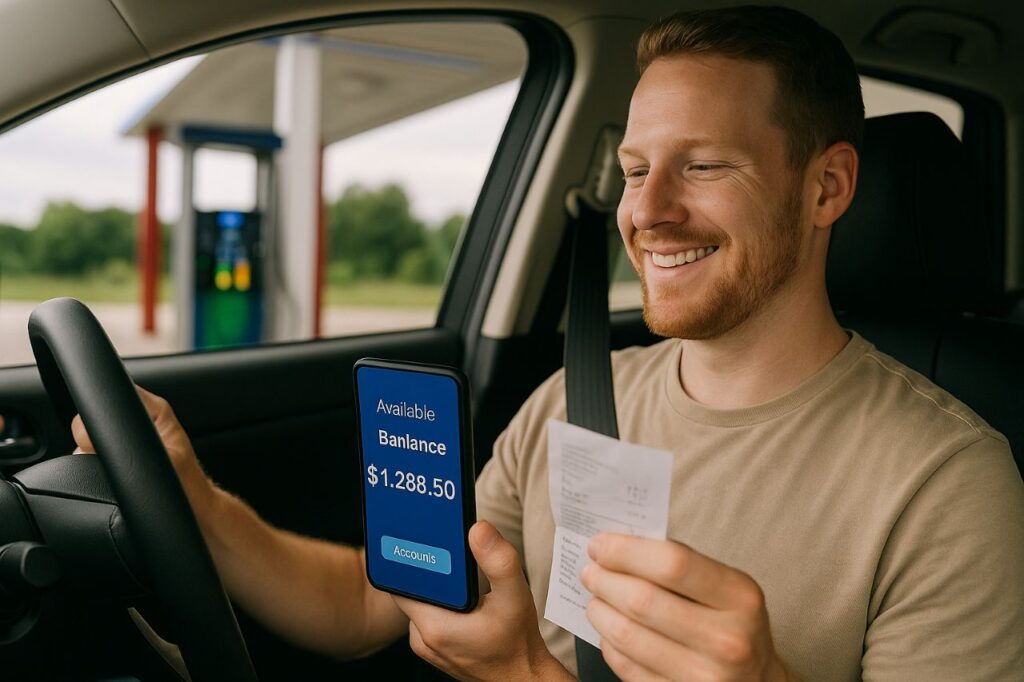
A debit card hold on a gas station purchase may be an annoyance, but for most motorists, it can be an unanticipated source of financial pressure—freezing money, causing overdraft fees, or disrupting other critical transactions.
As we’ve discussed, these holds are the result of pre-authorization policies designed to safeguard gas stations from unfunded fuel purchases. Legal and prevalent though they are, consumers might feel caught off guard by the opacity. Fortunately, as Visa, MasterCard, and big banks keep deploying real-time processing and notification features, those days of hours-long debit card holds are gradually disappearing.
Even so, knowledge is power. Whether you pay in, go to a credit card, prepaid gas cards, or prefer newer pump tech, you have the intel now to make sounder financial choices at the pump.
Last-Minute Reminders:
- Pay using a credit card or pay inside when you can.
- Check your account for holds, particularly after filling up.
- Go to newer gas stations with EMV-capable or contactless pumps.
- Understand your bank’s policies regarding pending transactions and overdrafts.
Act Now: If you’re plagued by frequent gas station debit card holds, contact your bank and inquire about real-time processing, alerts, or card controls. Arm yourself with tools to safeguard your budget—before your money gets held hostage.
Also Read: Moto Mart Gas Card: 7 Surprising Benefits You’re Missing Out On
Frequently Asked Questions (FAQs)
What is a gas station debit card hold?
A gas station debit card hold is a temporary pre-authorization amount (usually $50–$150) placed on your account when you pay at the pump, before the exact fuel cost is known.
How long does a gas station debit card hold last?
Holds typically last from a few hours up to 3 days, depending on your bank and the gas station’s processing system. Some may extend over weekends or holidays.
Why does the gas station place a hold higher than what I pumped?
Because the gas station doesn’t know how much fuel you’ll buy upfront, they request a higher hold amount as a security measure, which is adjusted after fueling ends.
Can I avoid a gas station debit card hold?
Yes. You can avoid it by paying inside, using a credit card, or using prepaid gas cards or gas station apps with mobile pay options.
Is a gas station debit card hold a charge?
No, it’s not a charge. It’s a temporary hold on funds. The actual amount you pumped will be charged once the station finalizes the transaction.
Does using a credit card prevent gas station debit card holds?
Yes. While credit card holds can occur, they don’t tie up your checking account funds and are processed faster with better fraud protection.
Are gas station debit card holds legal?
Yes. These holds are legal and standard practice but must follow guidelines set by payment networks and banks. Consumers are encouraged to monitor accounts and understand hold policies.

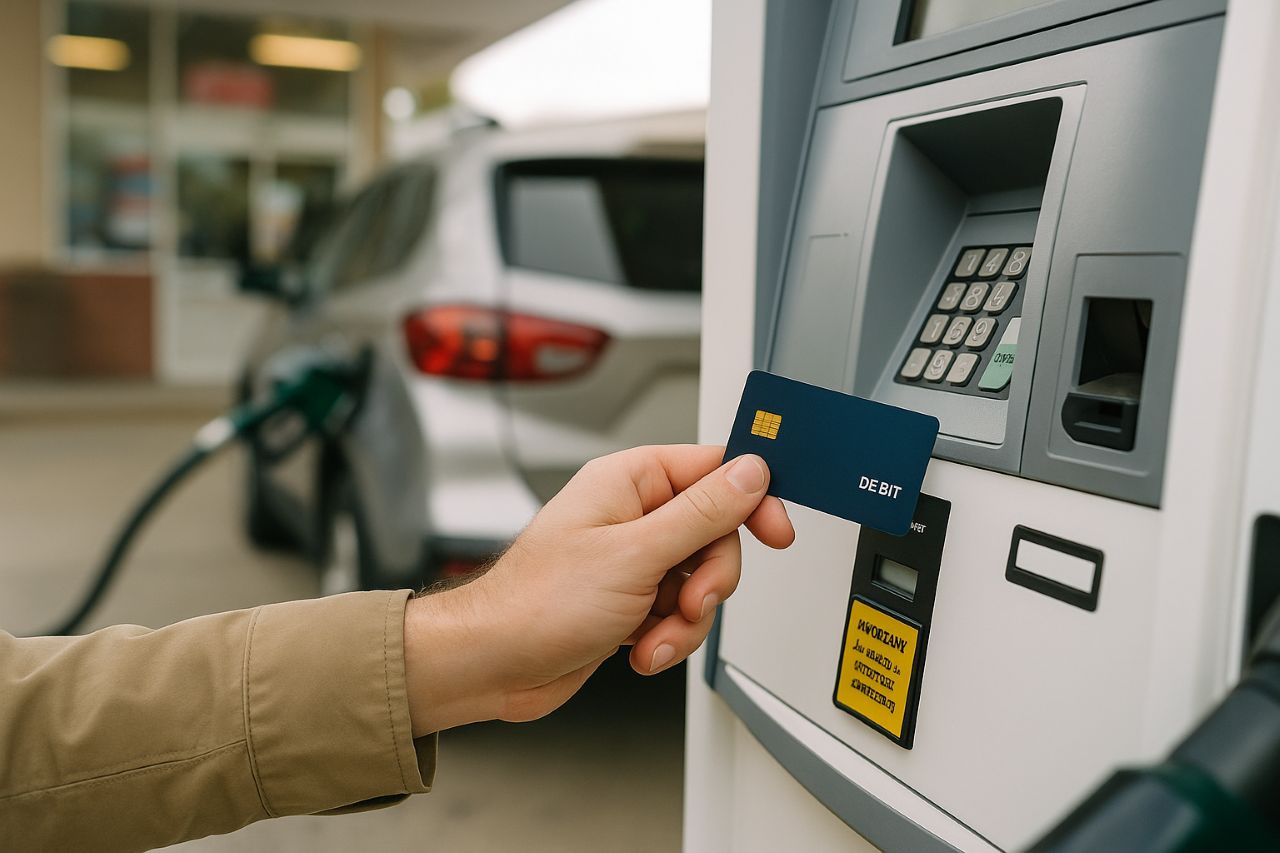




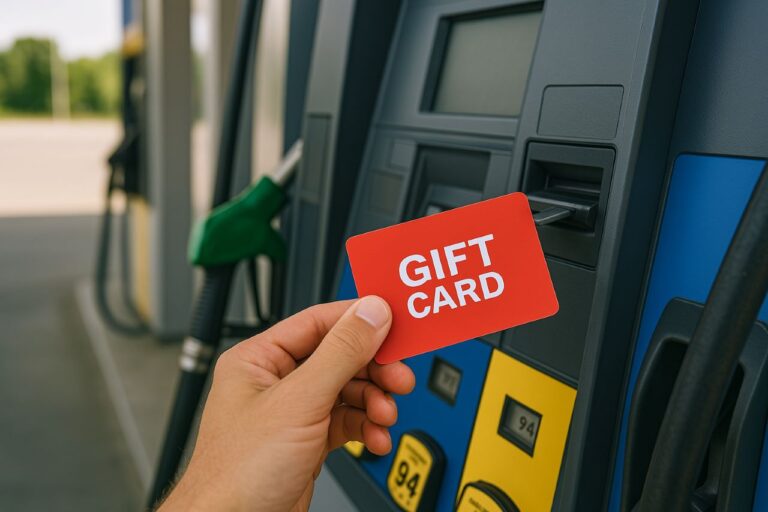

One Comment